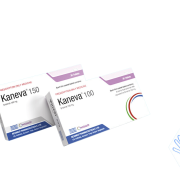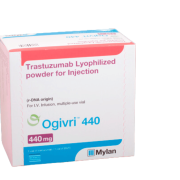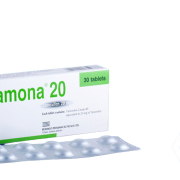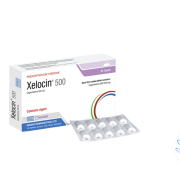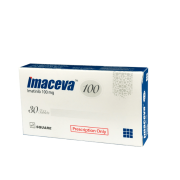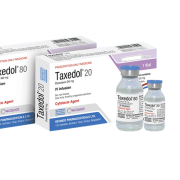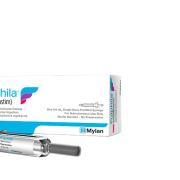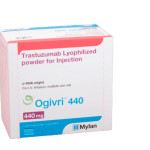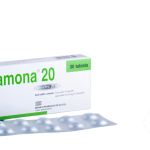Pacli
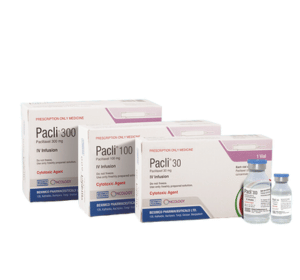
Generic Name: Paclitaxel
Dosage Form: Concentrated solution for IV infusion
TG Name: Oncology
1. What is Pacli®?
Pacli® is a novel anti-microtubule agent.
2. How Pacli® works in our body?
Pacli® promotes the assembly of microtubules from tubulin dimers and stabilizes microtubules by preventing de-polymerization. This stability results in the inhibition of the normal dynamic reorganization of the microtubule network that is essential for vital interphase and mitotic cellular functions. In addition, paclitaxel induces abnormal arrays or “bundles” of microtubules throughout the cell cycle and multiple asters of microtubules during mitosis.
3. What is the indication of Pacli®?
Ovarian Cancer, Lung Cancer, Breast Cancer, Kaposi’s Sarcoma.
4. What are the dosage & administration of Pacli®?
All patients should be pre-medicated prior to Pacli® administration in order to prevent severe hypersensitivity reactions. Such pre-medication may consist of dexamethasone 20 mg PO administered approximately 12 and 6 hours before Pacli®, diphenhydramine (or its equivalent) 50 mg IV 30 to 60 minutes prior to Pacli®, and cimetidine (300 mg) or ranitidine (50 mg) IV 30 to 60 minutes before Pacli®.
Preparation for Intravenous Infusion
Pacli® (paclitaxel) Injection must be diluted prior to infusion. Pacli® should be diluted in 0.9% Sodium Chloride Injection, USP; 5% Dextrose Injection, USP; 5% Dextrose and 0.9% Sodium Chloride Injection, USP; or 5% Dextrose in Ringer’s Injection to a final concentration of 0.3 to 1.2 mg/ml. The solutions are physically and chemically stable for up to 27 hours at ambient temperature (below 30° C) and room lighting conditions. Parenteral drug products should be inspected visually for particulate matter and discoloration prior to administration whenever solution and container permit.
First-line treatment of ovarian cancer: Although alternative medication regimens for paclitaxel are under investigation at present, a combination therapy of paclitaxel and cisplatin is recommended.
Depending on the duration of infusion, two different dosages are recommended for paclitaxel treatment: 175 mg/m2 of paclitaxel is administered as an intravenous infusion over a period of three hours followed thereafter by 75 mg/m2 of cisplatin and the therapy is repeated at 3-week intervals, or 135 mg/m2 of paclitaxel is administered as an intravenous infusion over a period of 24 hours followed thereafter by 75 mg/m2 of cisplatin and the therapy is repeated at 3-week intervals.
Second-line treatment of ovarian cancer: The recommended dose of paclitaxel is 175 mg/m2 administered over 3 hours, with a 3-week interval between courses.
Adjuvant chemotherapy in breast carcinoma: The recommended dose of paclitaxel is 175 mg/m2 administered over a period of 3 hours every 3 weeks for four courses, following AC therapy.
First-line chemotherapy of breast carcinoma: When used in combination with doxorubicin (50 mg/m2), paclitaxel should be administered 24 hours after doxorubicin. The recommended dose of paclitaxel is 220 mg/m2 administered intravenously over a period of 3 hours, with a 3-week interval between courses.
When used in combination with trastuzumab, the recommended dose of paclitaxel is 175 mg/m2 administered intravenously over a period of 3 hours, with a 3-week interval between courses. Paclitaxel infusion may be started the day following the first dose of trastuzumab or immediately after the subsequent doses of trastuzumab if the preceding dose of trastuzumab was well tolerated.
Second-line chemotherapy of breast carcinoma: The recommended dose of paclitaxel is 175 mg/m2 administered over a period of 3 hours, with a 3-week interval between courses.
Advanced non-small cell lung cancer: The recommended dose of paclitaxel is 175 mg/m2 administered over 3 hours followed by 80 mg/m2 of cisplatin, with a 3-week interval between courses.
Treatment of AIDS-related KS: The recommended dose of paclitaxel is 100 mg/m2 administered as a 3-hour intravenous infusion every two weeks.
Dose adjustment: Subsequent doses of paclitaxel should be administered according to Individual patient tolerance. Paclitaxel should not be re-administered until the neutrophil count is ≥1.5 x 109/l (≥1 x 109/l for KS patients) and the platelet count is ≥100 x 109/l (≥75 x 109/l for KS patients).
Patients who experience severe neutropenia (neutrophil count <0.5 x 109/l for a minimum of 7 days) or severe peripheral neuropathy, should receive a dose reduction of 20% for subsequent courses (25% for KS patients).
Patients with hepatic impairment: Inadequate data are available to recommend dosage alterations in patients with mild to moderate hepatic impairments. Patients with severe hepatic impairment must not be treated with paclitaxel.
5. What are the contraindications of Pacli®?
- Paclitaxel is contraindicated in patients with severe hypersensitivity reactions to paclitaxel, macrogolglycerol ricinoleate (polyoxyl castor oil)
- Paclitaxel is contraindicated during lactation
- Paclitaxel should not be used in patients with baseline neutrophils <1.5 x 109/l (<1 x 109/l for KS patients) or platelets <100 x 109/l (<75 x 109/l for KS patients)
- In KS, paclitaxel is also contraindicated in patients with concurrent, serious, uncontrolled infections
- Patients with severe hepatic impairment must not be treated with paclitaxel
6. What are the adverse effects of Pacli®?
Common: Low blood counts leading to increased risk for infection, anemia and/or bleeding, hair loss, arthralgias and myalgias, pain in the joints and muscles, peripheral neuropathy, nausea, vomiting (usually mild), diarrhea, Mouth sores, hypersensitivity reaction, fever, facial flushing, chills, shortness of breath, or hives after paclitaxel is given.
Rare: Swelling of the feet or ankles (edema), liver problems, low blood pressure, darkening of the skin where previous radiation treatment has been given.
7. What would be the storage condition of Pacli®?
Do not store above 30°C and keep in a dry place. Protect from light and keep out of the reach of children. Use only freshly prepared solution.


